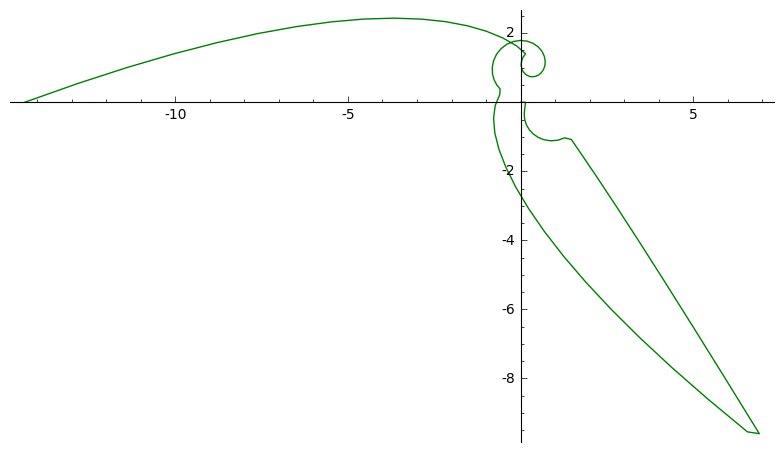A Sage library for computing with Abelian functions, Riemann surfaces, and algebraic curves. Abelfunctions is the Ph.D. thesis work of Chris Swierczewski. (GitHub: cswiercz). Abelfunctions requires Sage 9.2 or later.
sage: from abelfunctions import *
sage: R.<x,y> = QQ[]
sage: X = RiemannSurface(y**3 + 2*x**3*y - x**7)
sage: X.riemann_matrix()
array([[-1.30901699+0.95105652j, -0.80901699+0.58778525j],
[-0.80901699+0.58778525j, -1.00000000+1.1755705j ]])
sage: P = X(0)[0]; P
(t, 1/2*t^4 + O(t^7))
sage: AbelMap(P)
array([-0.29124012+0.64492948j, -0.96444625+1.1755705j ])
sage: gamma = X.path(P)
sage: gamma.plot_x(); gamma.plot_y(color='green');For installation instructions, tutorials on how to use this software, and a complete reference to the code, please see the Documentation. You can also post questions in the Discussions Page.
Please report any bugs you find or suggest enhancements on the Issues Page.
- CyclePainter - A tool for building custom paths on Riemann surfaces
C. Swierczewski et. al., Abelfunctions: A library for computing with Abelian functions, Riemann surfaces, and algebraic curves,
http://github.com/abelfunctions/abelfunctions, 2017.
BibTeX:
@misc{abelfunctions,
author = {C. Swierczewski and others},
title = {Abelfunctions: A library for computing with Abelian functions, Riemann surfaces, and algebraic curves},
note= {\tt http://github.com/abelfunctions/abelfunctions},
year = 2017,
}




